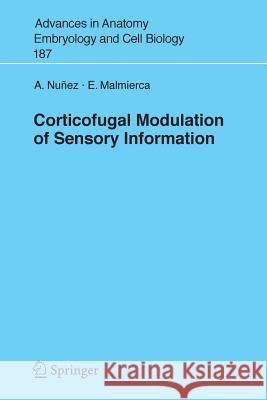Corticofugal Modulation of Sensory Information » książka
Corticofugal Modulation of Sensory Information
ISBN-13: 9783540367697 / Angielski / Miękka / 2006 / 88 str.
1 Introduction The processing of sensory information by the central nervous system is dif?cult to understand by the complex interconnections between subcortical and cortical areas. Connections between the thalamus and cortex are largely reciprocal, with information being processed in both feed-forward (periphery to thalamus to c- tex) and feedback (corticothalamic) directions. Sensory signals reach the cerebral cortex after having made synapses in different relay stations along the sensory pa- way. Classically, excitatory and inhibitory actions have been thought to modulate sensory responses in the relay stations, thereby contributing to sensory proce- ing in the central nervous system. However, anatomical studies demonstrated the existence of precise corticofugal projections to subcortical relay stations a long time ago. Since the late 1950s, electrophysiological studies of sensory cortex - tivation and inactivation have also shown that the cortex induces excitation and inhibition of sensory responses in subcortical neurons. Although the majority of studies have concentrated on the ascending or feed-forward system, the feedback connections are actually much more numerous than the thalamocortical axons and may contribute to focusing information processing in the visual, auditory, and somatosensory pathways. Glutamate has been proposed as the neurotransmitter in corticofugal neurons on the basis of early iontophoretic studies (Krnjevic and Phillis 1963) as well as more recent studies with a variety of other techniques (e. g., Fagg and Foster 1983; Rustioni et al. 1983; Donoghue et al. 1985).











